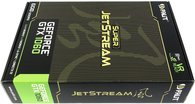 The Palit GeForce GTX 1060 SuperJetstream is almost identical to the Gainward GeForce GTX 1060 Phoenix GS, but varies in some minor details. We will also deal with this in the following places.
The Palit GeForce GTX 1060 SuperJetstream is almost identical to the Gainward GeForce GTX 1060 Phoenix GS, but varies in some minor details. We will also deal with this in the following places.
Otherwise, the genes are quite strikingly similar, which is not surprising in the end, because everything comes from the same factory anyway. But where does the SuperJetstream end up after the test and can it even inspire them more than the Gainward relationship due to slight differences?
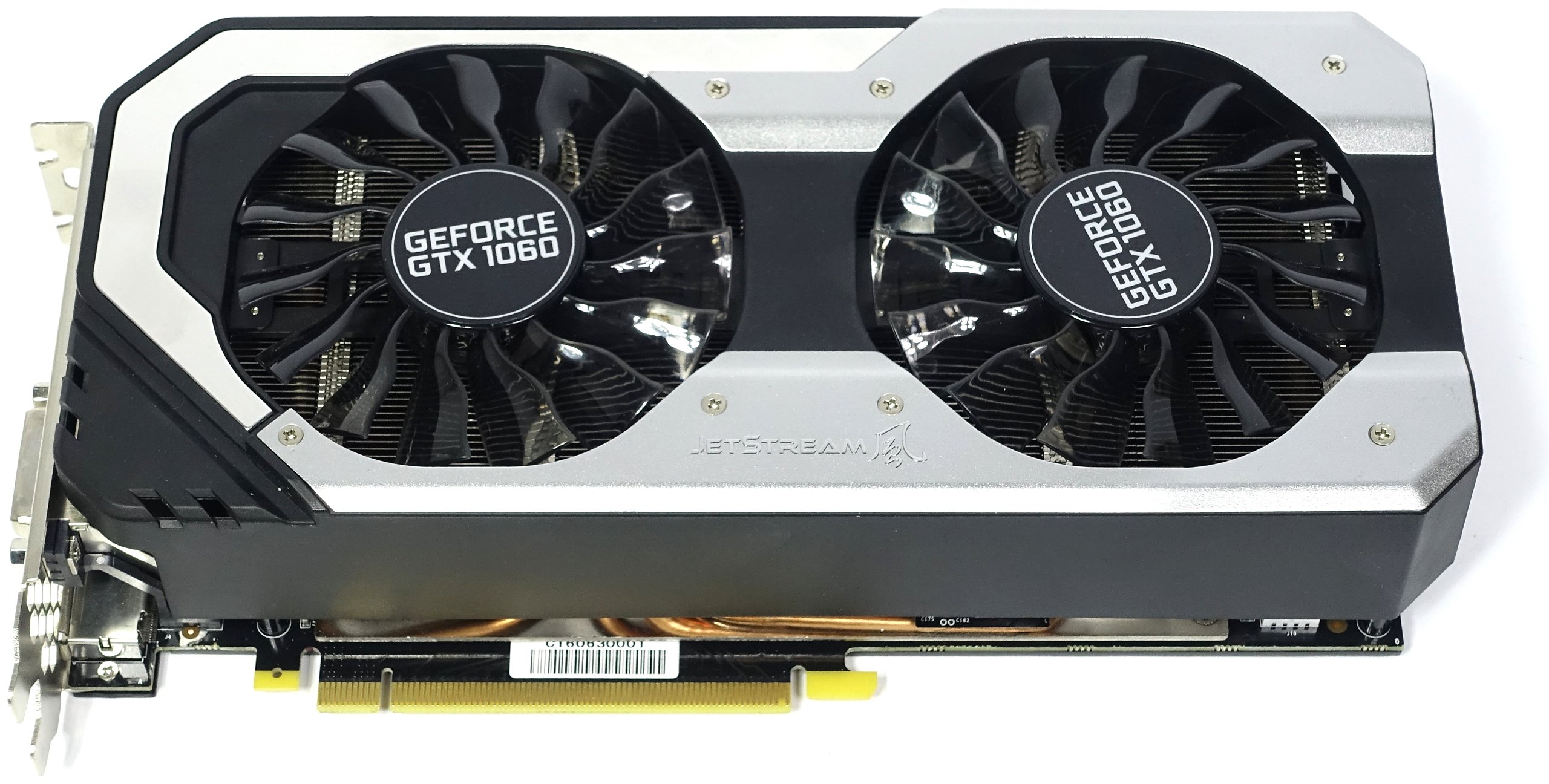
The SuperJet stream has long marked the upper end of Palit's in-house overclocking strategy. Only the larger models of the GeForce GTX 1070 and GTX 1080 have a Game Rock Premium Edition on top. In the 1060s, this was given to good reason, because excessive fragmentation costs money.
External structure and connections
As with the company's internal sister, the radiator cover is made entirely of black plastic as well as various metal applications and is designed as an extra attachment, including the fan modules. Thus, by loosening only four screws, a Palit card could be visually transformed into a gainward and vice versa. However, Palit relies on a silver-metal cover with chrome ornamental.
The card weighs a moderate 878 grams and is quite compact. Like her sister from Gainward, she measures only 24 cm in length, is 11.7 cm high and at least a proud 4.7 cm deep (installation dimensions) and thus effectively occupies three slots, which makes it rather difficult to install in smaller ITX systems.
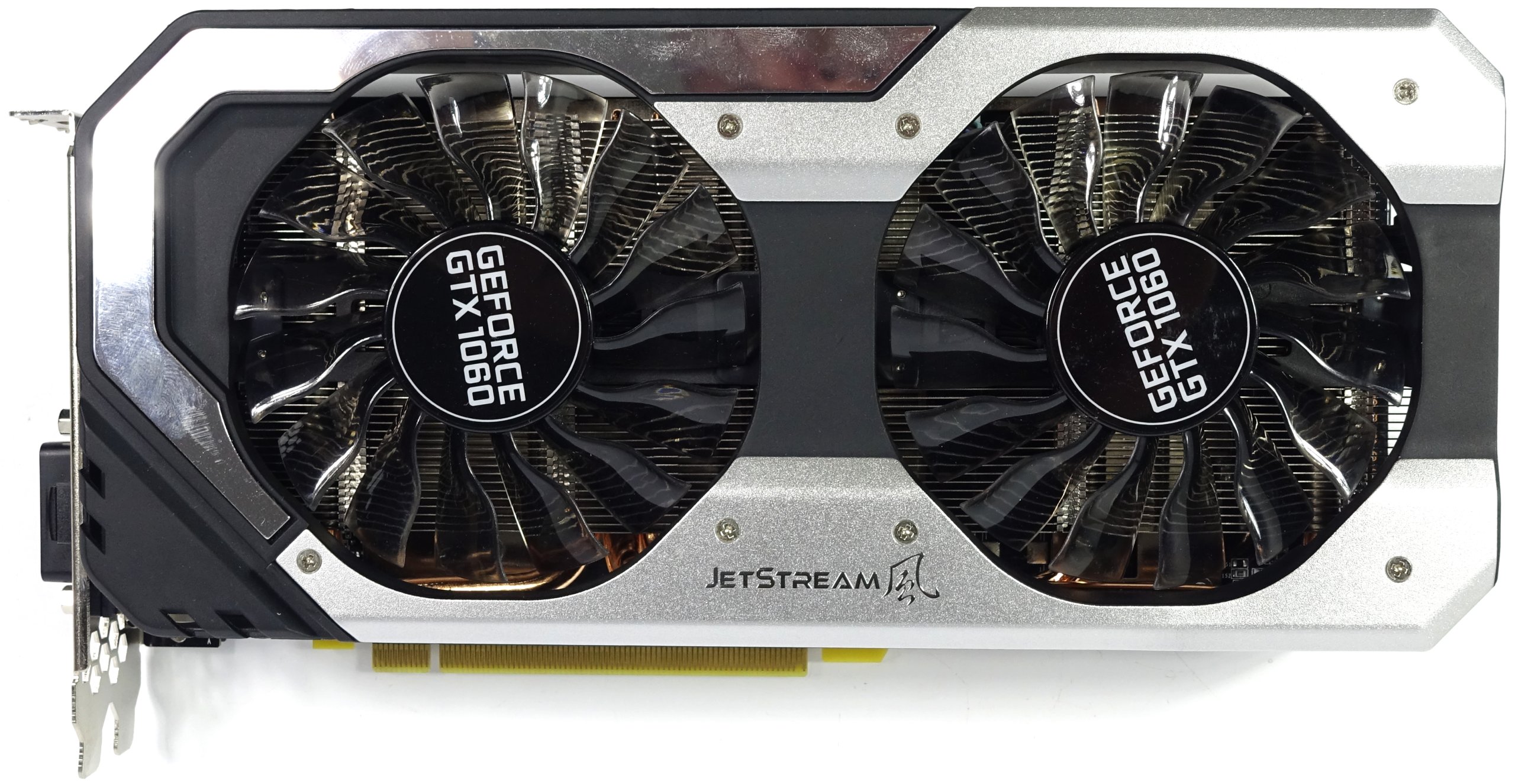 |
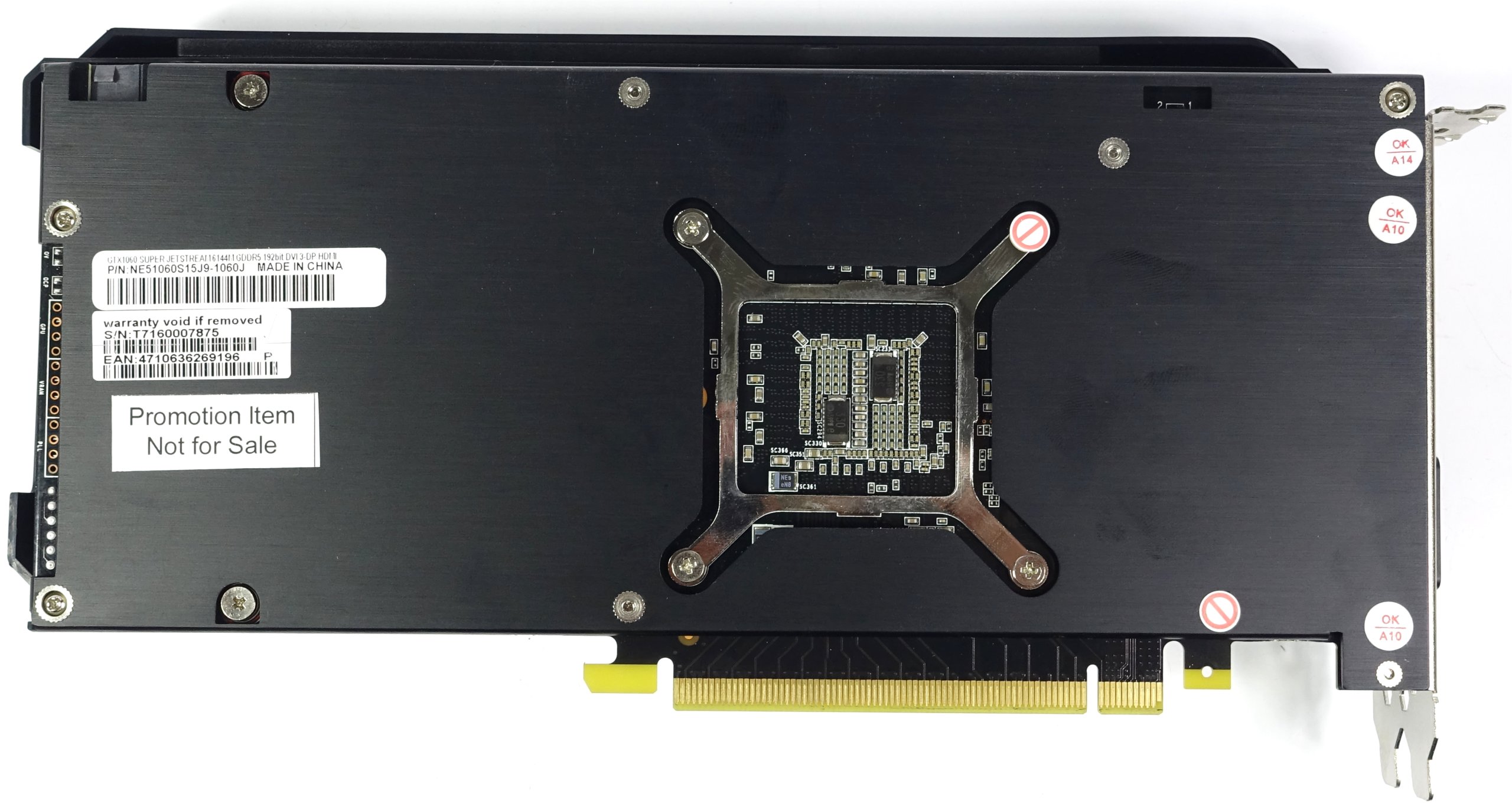 |
The back of the board is covered by a one-piece backplate, which has no ventilation openings and no cooling function. With this backplate, you have to plan another five millimeters depth on the back and take care, especially with ITX systems, that nothing conflicts between the CPU cooler and the card.

The top of the card bears the backlit Palit lettering as a controllable RGB LED version. The only 6-pin PCIe power supply connection sits 180° rotated at the end of the card. This makes technical sense, as you don't have to shorten the cooling fins any further.
A closer look at the heatpipes on the ground shows us that, as with the sister model, these were not embedded in a radiator block or the heat spreader, but only lie flat behind the base plate. Whether and how this very cost-effective variant proves itself, we will see in a while.

The horizontal slat alignment ensures that a not inconsiderable part of the waste heat is carried out of the housing via the very air permeable slot aperture thanks to the many honeycomb-shaped openings. You can see this principle of air flow at the end of the map, but here the air lands in the middle of the housing, which makes a good airflow all the more important.
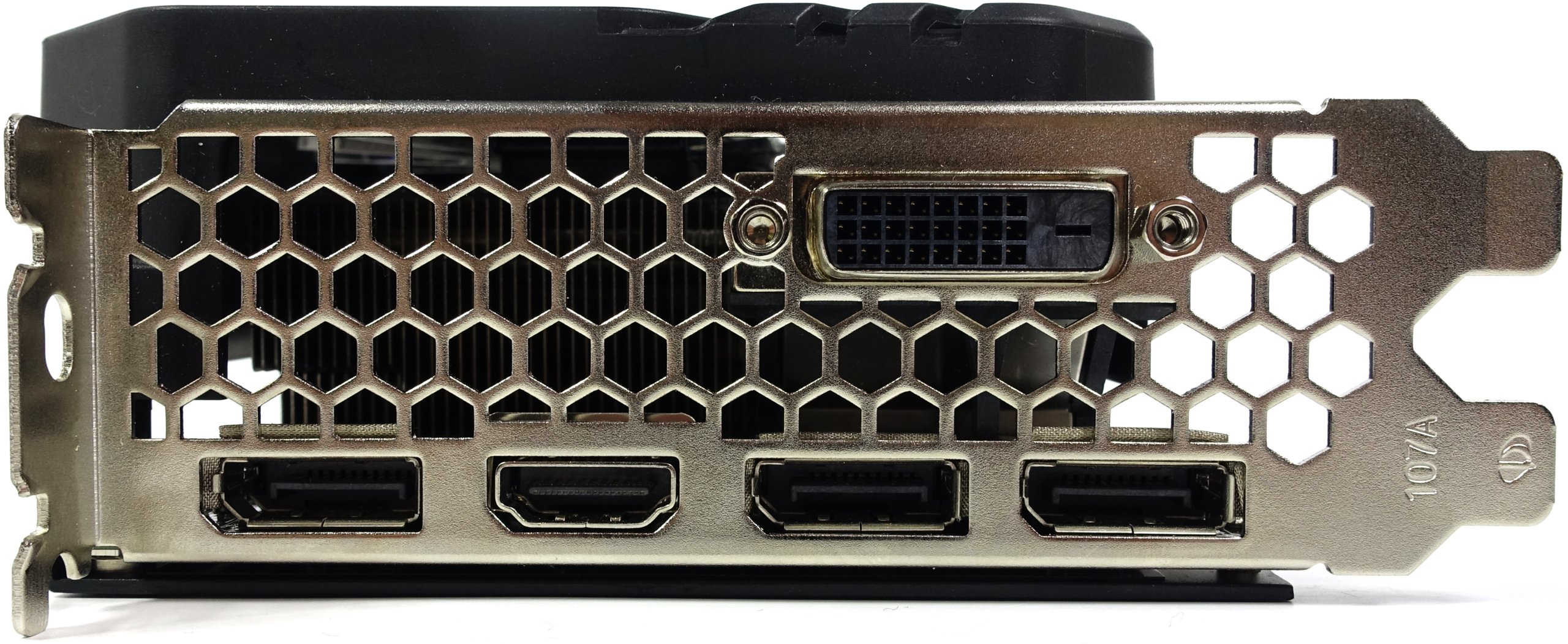 |
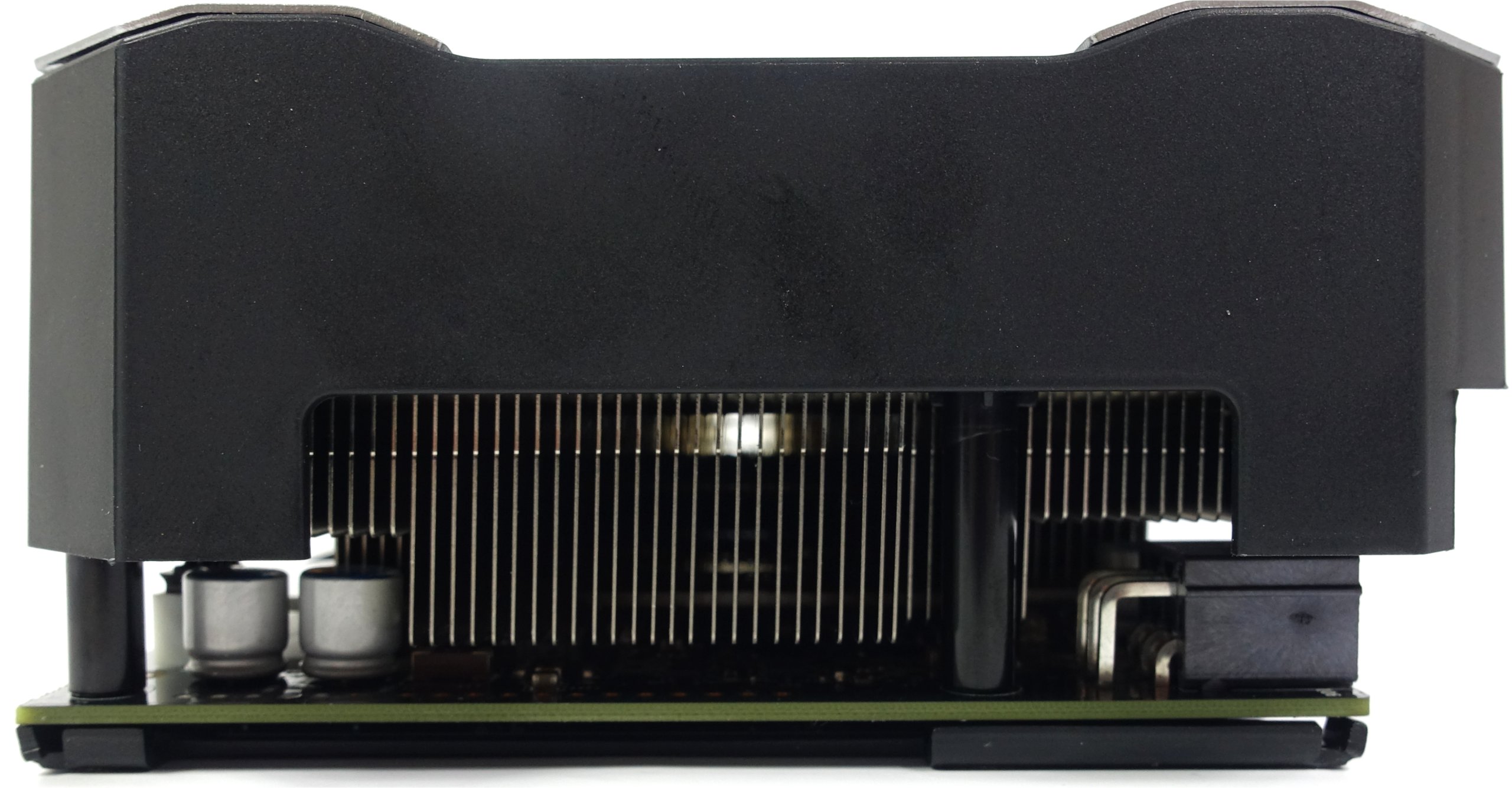 |
The slot aperture carries the usual five outputs, a maximum of four of which can be used together as part of a multi-monitor setup. In addition to the dual-link DVI-D (an analog signal is not looped through), there is an HDMI 2.0 output and three DisplayPort 1.4 ports on the back.
Board and assembly
Let's take a closer look at the board shared by Palit and Gainward, which has some distinctive features in direct comparison to Nvidia's reference and most other board partner cards.
First, we'll see the four phases, three of which are mapped to the GPU and one to memory. Two of the three GPU phases are fed from the PCIe port, the third and the memory phase from the motherboard slot.
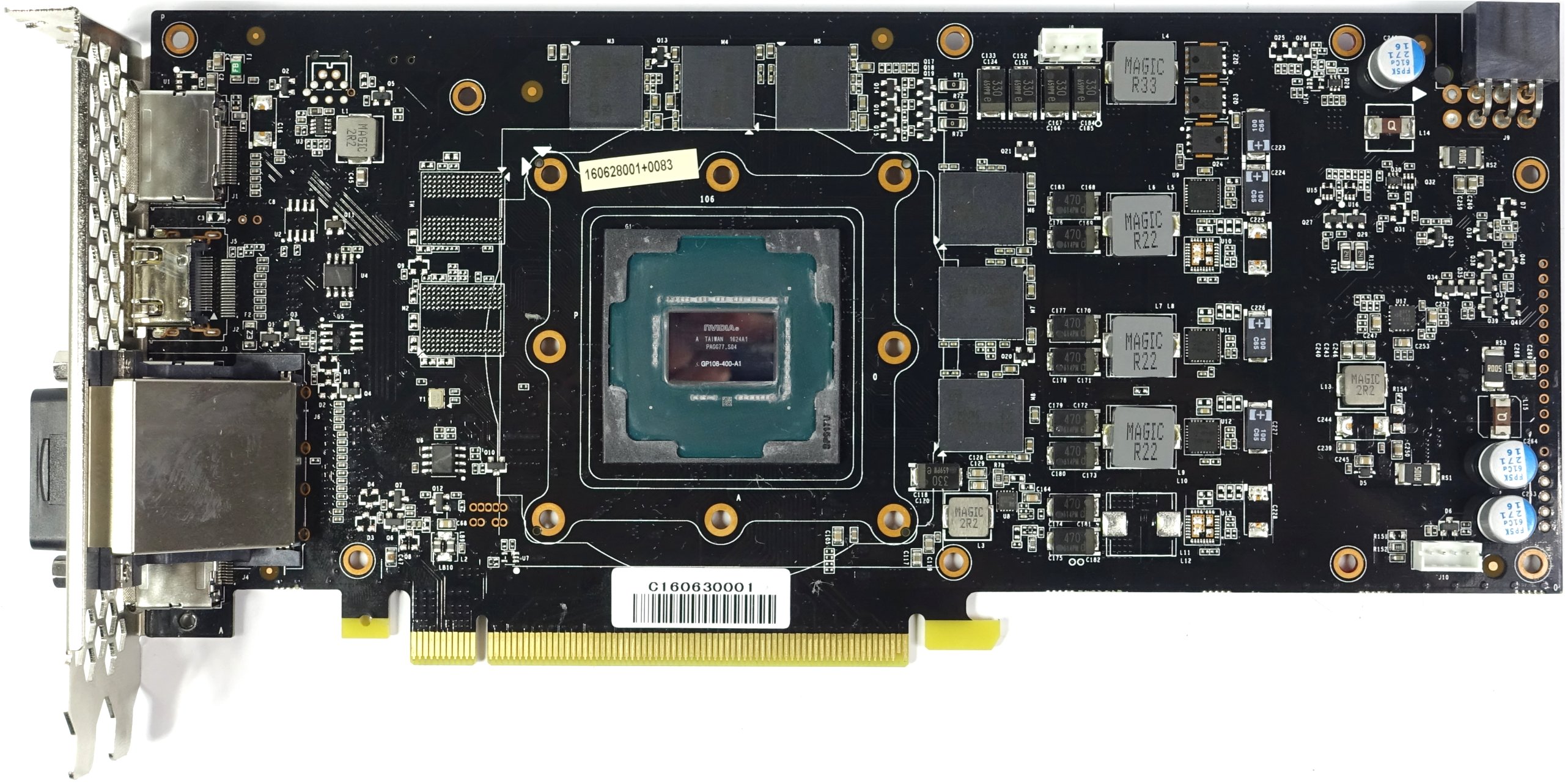
Although the motherboard would also offer the theoretical possibility to use one phase more, Gainward relies on a rather rarely used and also quite inexpensive NCP81174 from ON Semiconductor, which can only control a maximum of four phases anyway. The still free connection option could therefore only be used for another, parallel running converter train (doubling).
The three GPU phases rely on a more integrated Vishay SiC632 that combines gate drivers, high- and low-side MOSFET and Schottky diode in one package.
Only in memory, one then relies conventionally on a pair of N-Channel MOSFETS (an SM4503NHKP (30A, high-side) and an SM4377NSKP (50A, low-side) from Sinopower), which are also more likely to be located on the favorable edge.
Overall, you can already tell the board that you haven't put the last penny into expensive components, especially since smoothing solids are sown quite rare. Foxconn's Magic Chokes are good middle-class and also perform their service in a very unobtrusive way.
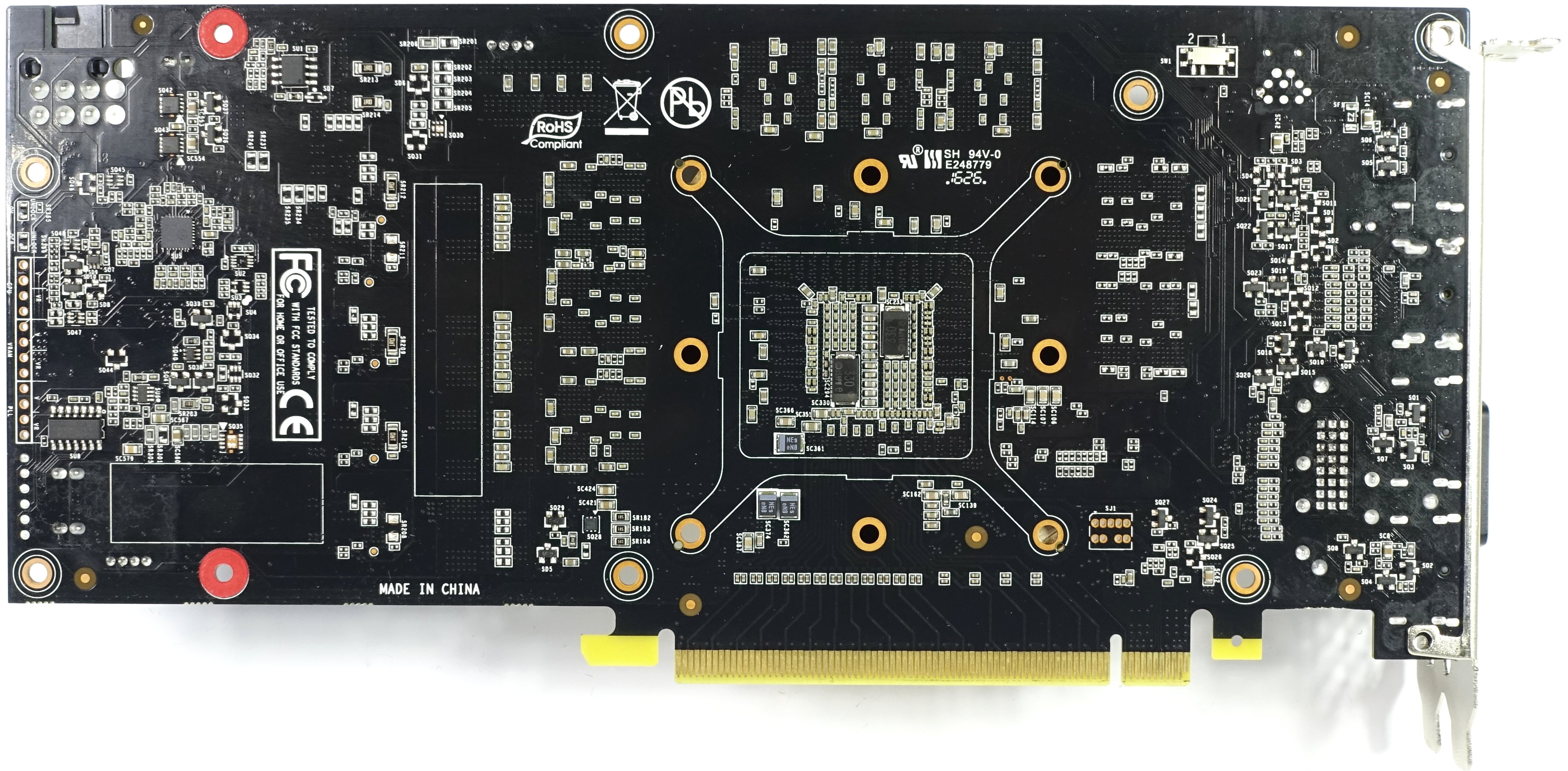
Below the GPU, two more capacitors are soldered to intercept and smooth voltage peaks – exactly the same principle as Nvidia's Refrenz.
We note that only six of the eight existing memory fields are modules on this map. These are Samsung modules of the type K4G80325FB-HC25, each with a capacity of eight gigabit (32x 256 MBit) and can be operated with voltages between 1,305 and 1,597 volts, depending on the required clock. In total, this results in a total memory of six gigabytes.
Clock rates, voltages and power consumption
Of course, the course of boost clock and adjacent GPU core voltage as well as the connection between clock frequency and voltage are also interesting, whereby the clock curve breaks down significantly during gaming and when the card is fully warmed up. Whether it was due to the better GPU quality, that the clock rates were still a little higher than with the Gainward card, especially at the beginning, can only be guessed.
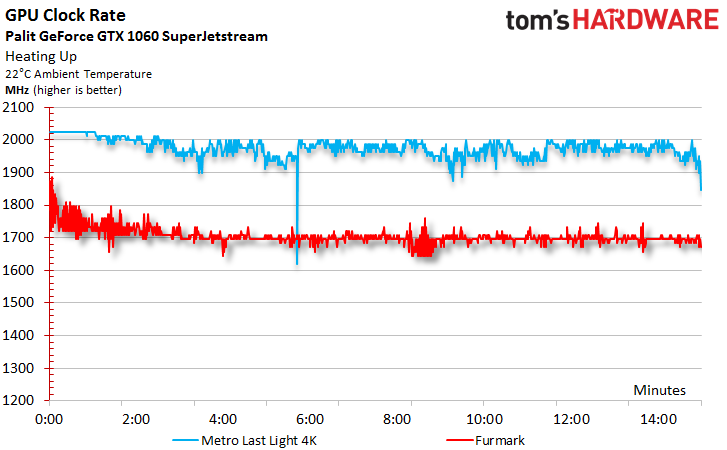
But otherwise everything is pretty much congruent. While the initial 2025 MHz boost clock falls to an acceptable 1949 MHz on average after heating and under load (frequent fluctuations up and down included), the measured voltage values are quite similar: on average, 0.975 volts are between 1.025 and 0.9 volts.
This is due to the intervention of Boost 3.0 and the rather low-set Power Target, which limits the power consumption to 130 watts and below.
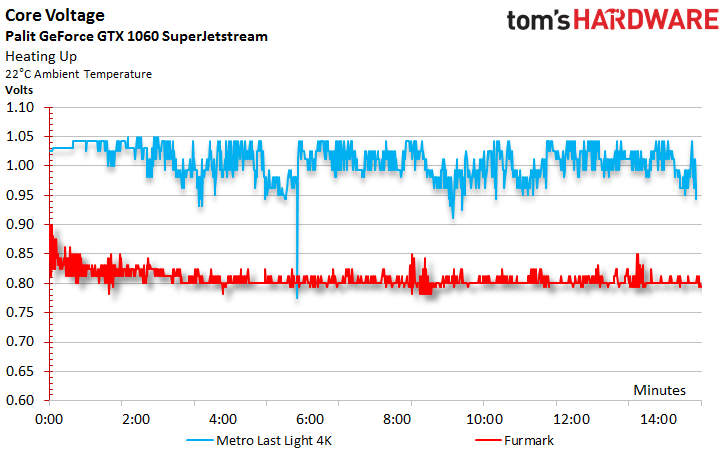
These voltage curves and the flowing currents result in the already mentioned power consumption, which we can measure very well with our exact equipment at all connections.
As with the Gainward sister, the lowest GPU clock speed for idle measurement is approx. 253 MHz. We worked with a variable low-pass filter for the measurements, so that we only mention possible, very short load peaks on the margins (greyed out bar), because they are hardly relevant in practice and have also irritated many readers.
What is striking, however, is the significantly higher power consumption, especially at smaller screen resolutions, while the maxima coincides with the gainward card. However, since full HD's gaming performance is also slightly higher, the result remains in proportion because the card can hold the higher boost clock rates for much longer.
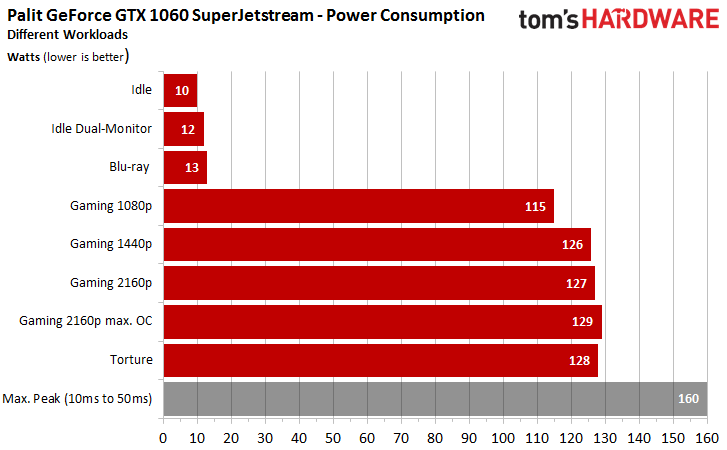
It is also the low Power Target that cuts the voltages during the stress test Boost 3.0 to such an extent that the power consumption is even slightly lower than in gaming, if you start the worst case there.
Loading of the power supply connections
Now we look at the division of the loads at maximum gaming load and the stress test: Since the 3.3V motherboard connection is not used at all, we have dispensed with this voltage rail in the diagrams.
The division of the four phases between the respective supply connections is completely uncritical, but also leaves no greater room for overclocking tests according to the standards – but these are anyway provided by the BIOS (Power Target and Voltage Specification) braked:
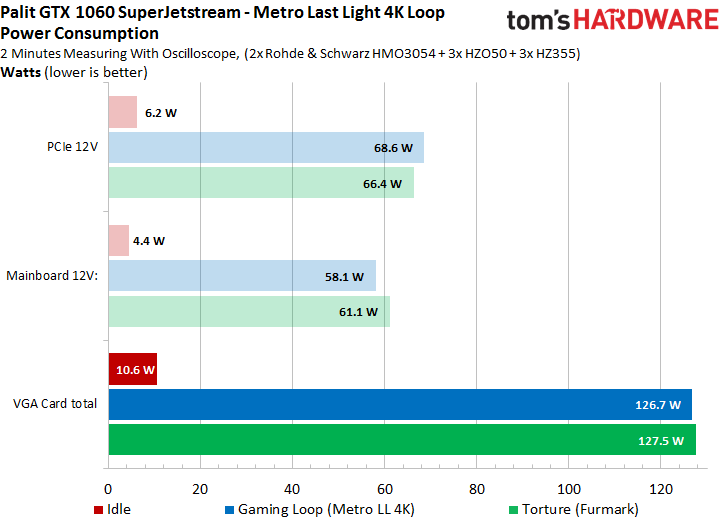
Here's another clickable diagram with the respective history curves for gaming and stress testing:
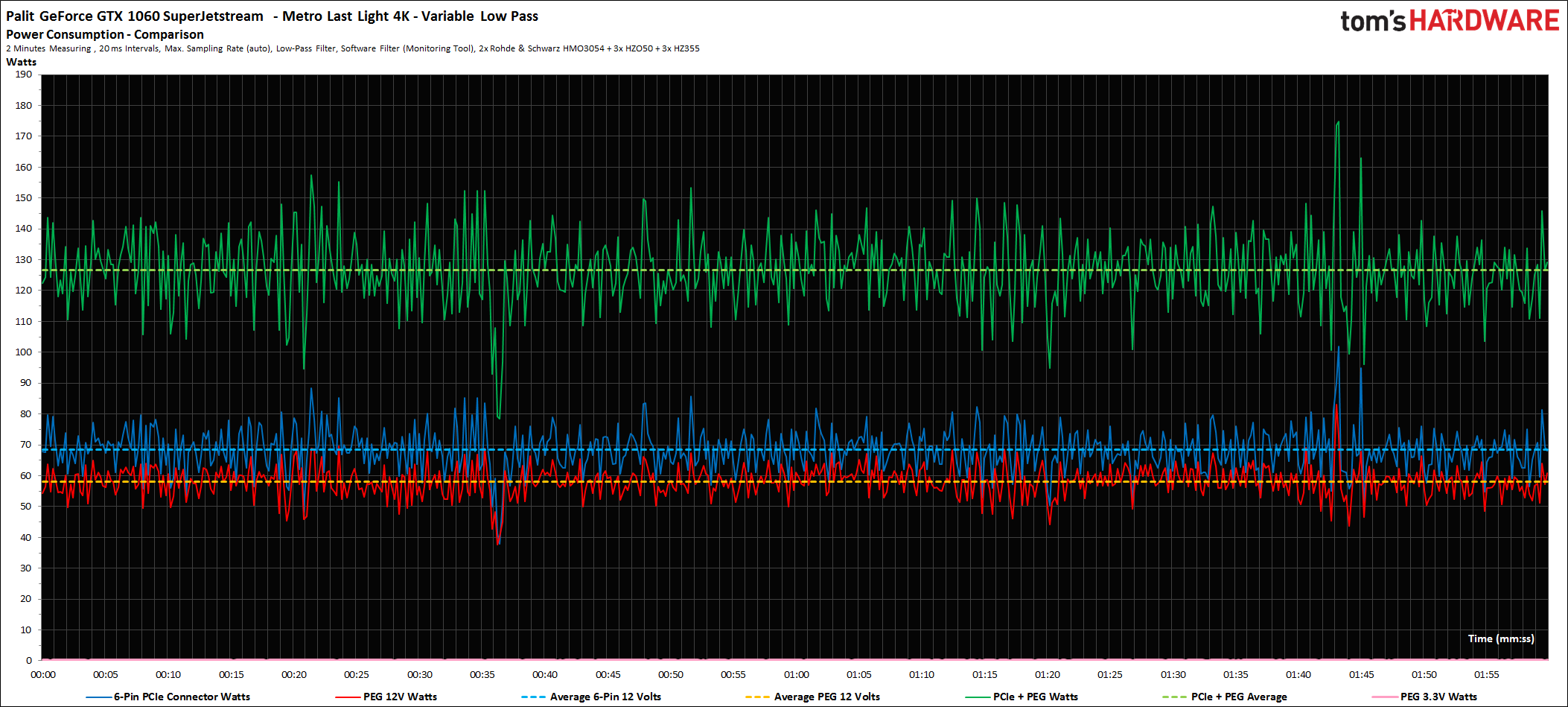 |
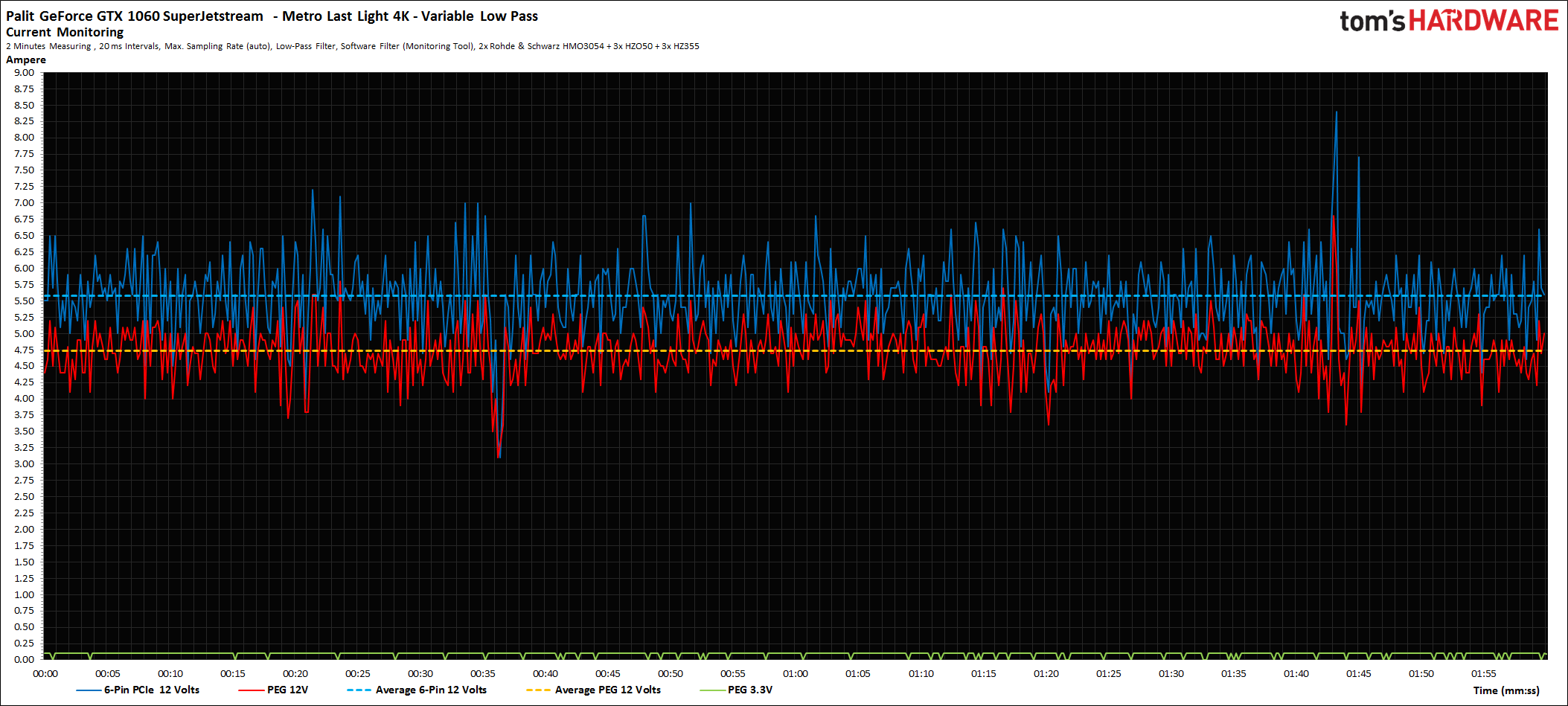 |
Since the standards (PCI SIG) refer only to the flowing currents, we now look at the following diagrams, because the power consumption is only half the rent. With around five amps on the motherboard slot, which is also slightly more than the Gainward card, you are still loose on the safe side (PCI-SIG standard: max. 5.5 amps):
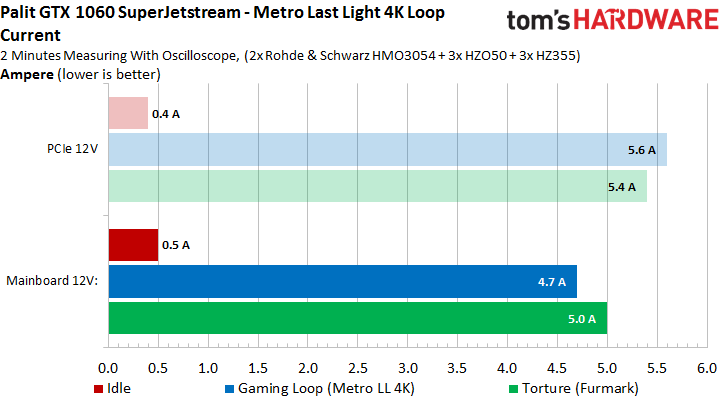
Of course, there are still clear large screens for the measured currents:
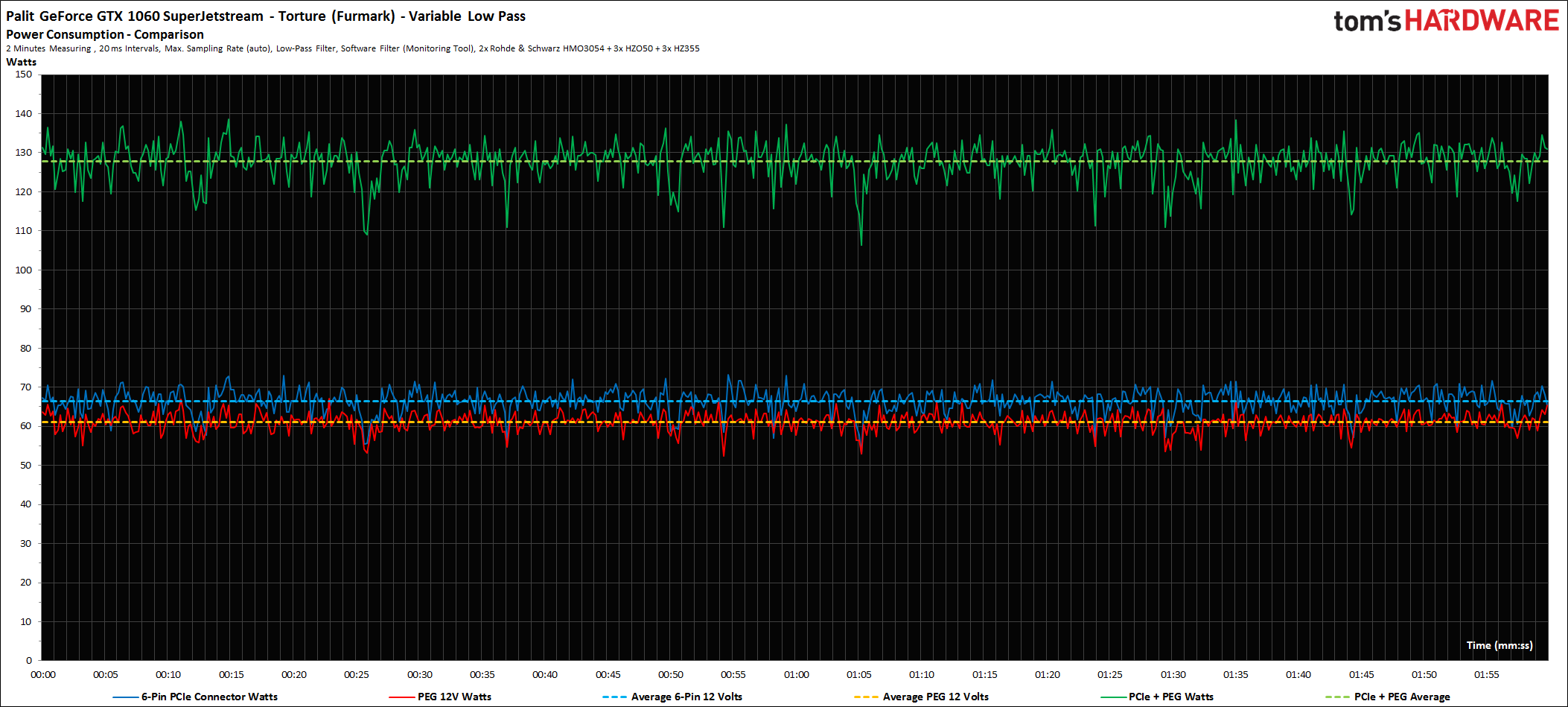 |
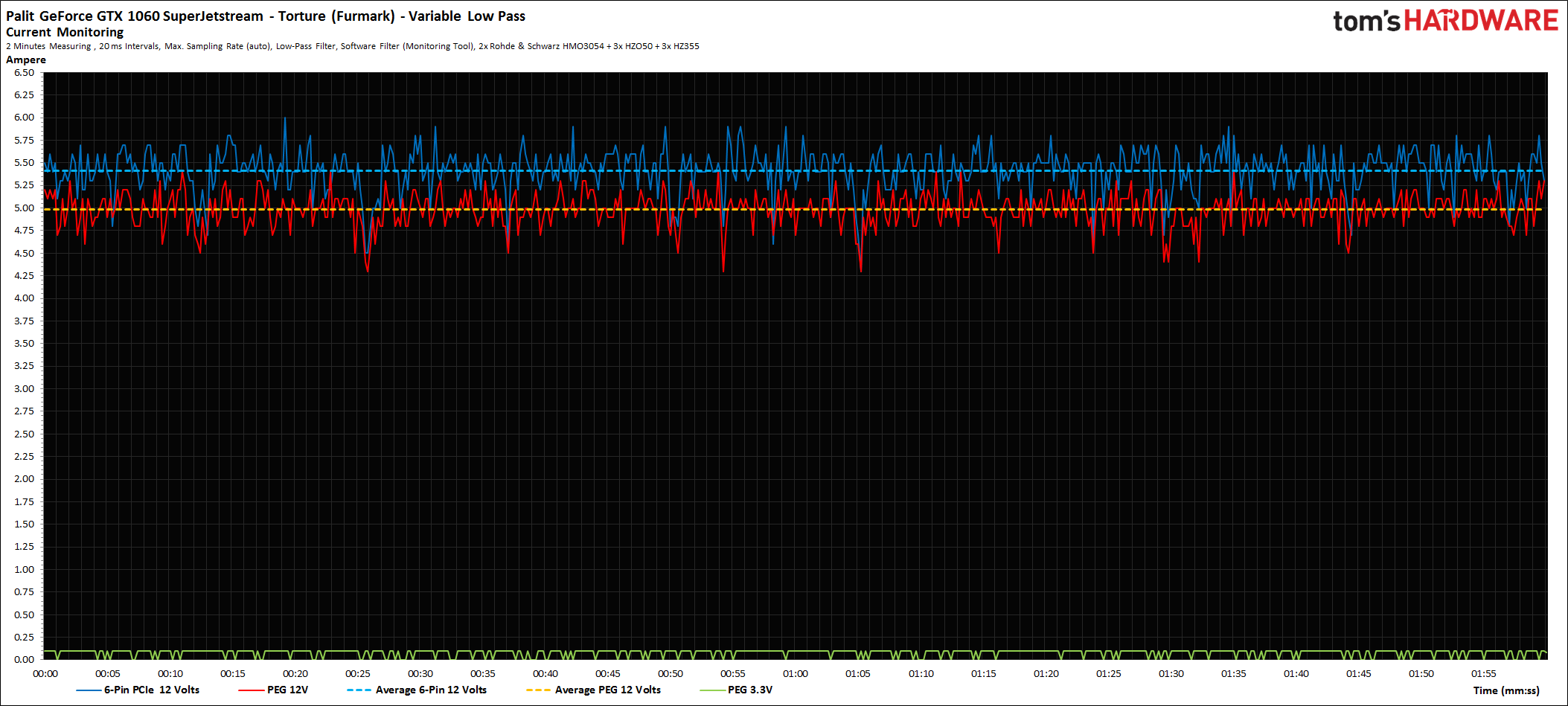 |
Cooling system and temperatures
Now we come to the cooler, which has some peculiarities, but is identical for Palit and Gainward. The backplate, which is not relevant for cooling, is purely optical in nature and is secured from the top of the board once again with four screws against the overly curious.
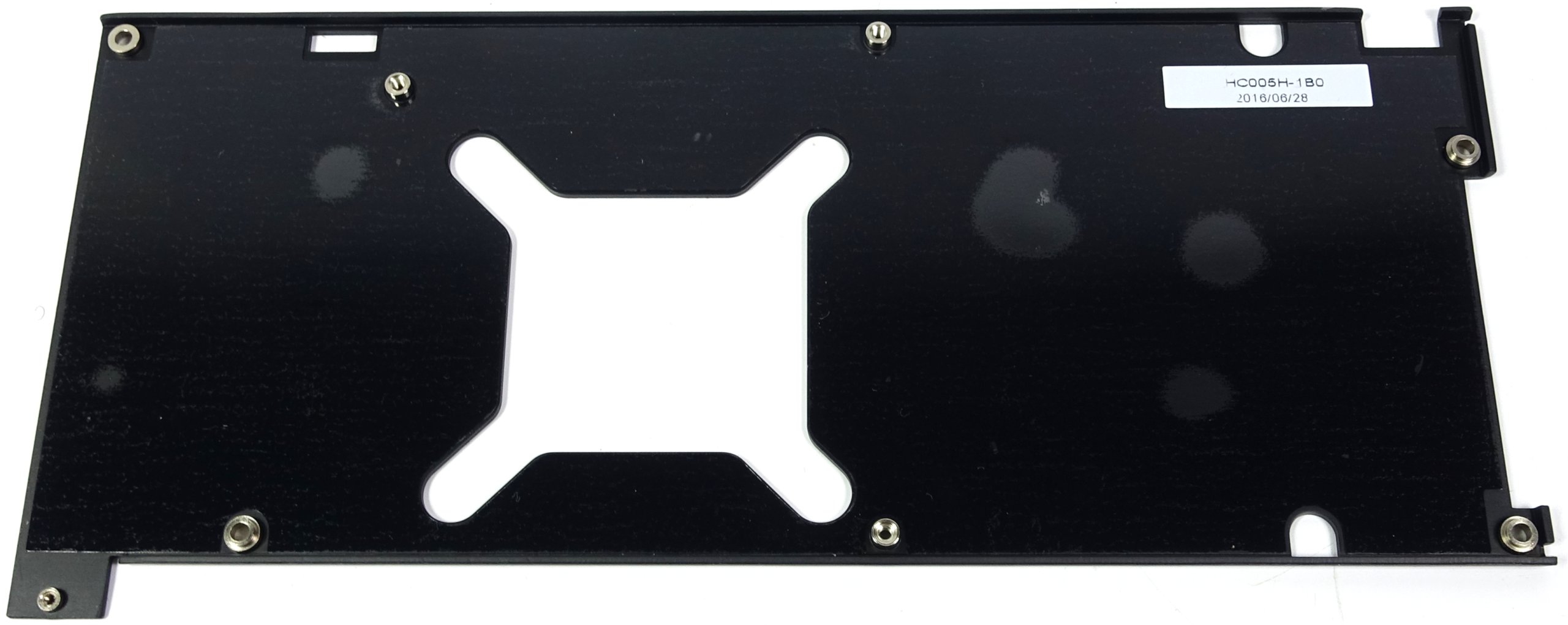
The already mentioned cover has a slightly different look at Gainward and Palit and also the fans, which come from FirstD, are slightly different. The drive of the Gainward card is stronger (6.6 watts, max. 2700 rpm), while Palit relies on a slightly weaker 4.8-watt model for the SuperJetstream, which can rotate at a maximum of 2500 rpm.
In addition, there is the deviating blade geometry of the 9 cm rotor blades, which is slightly wave-shaped at Palit, especially since here the rotor blade surface remains smooth and without grooves. Also worth mentioning is the opposite direction of rotation of the two fan blades, which can be clearly seen on the rotor blades. In the end, we should achieve a little greater efficiency here and, as a result of the implementation, a greater turbulence of the air (which is what is wanted).
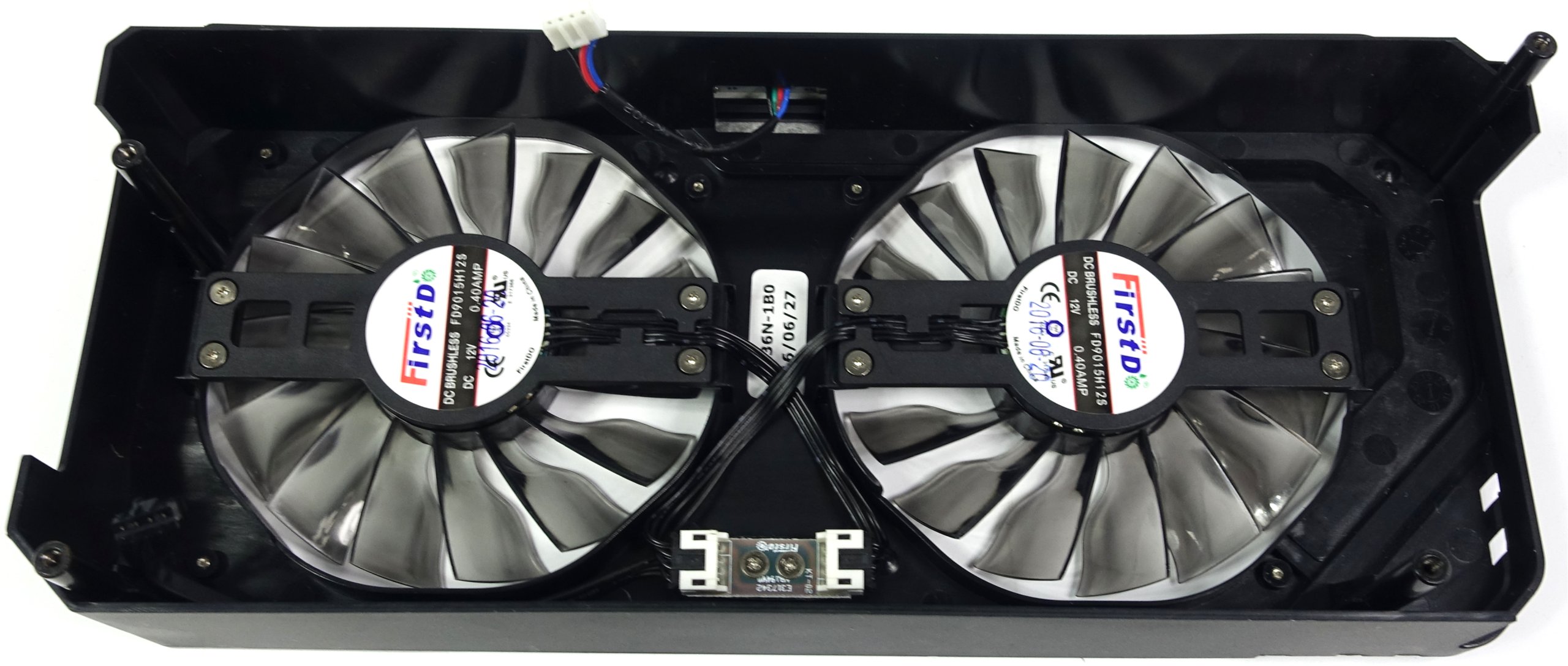
As already mentioned, the rather filigree-looking cooler has horizontally aligned fins as well as four angled 4 mm heatpipes made of sintered composite material. However, the latter are not massively laid in the radiator floor, but lie only at the back on the rather thin base plate. Expensive copper is just as bad an indication here as a heat sink that is at least massively filled.
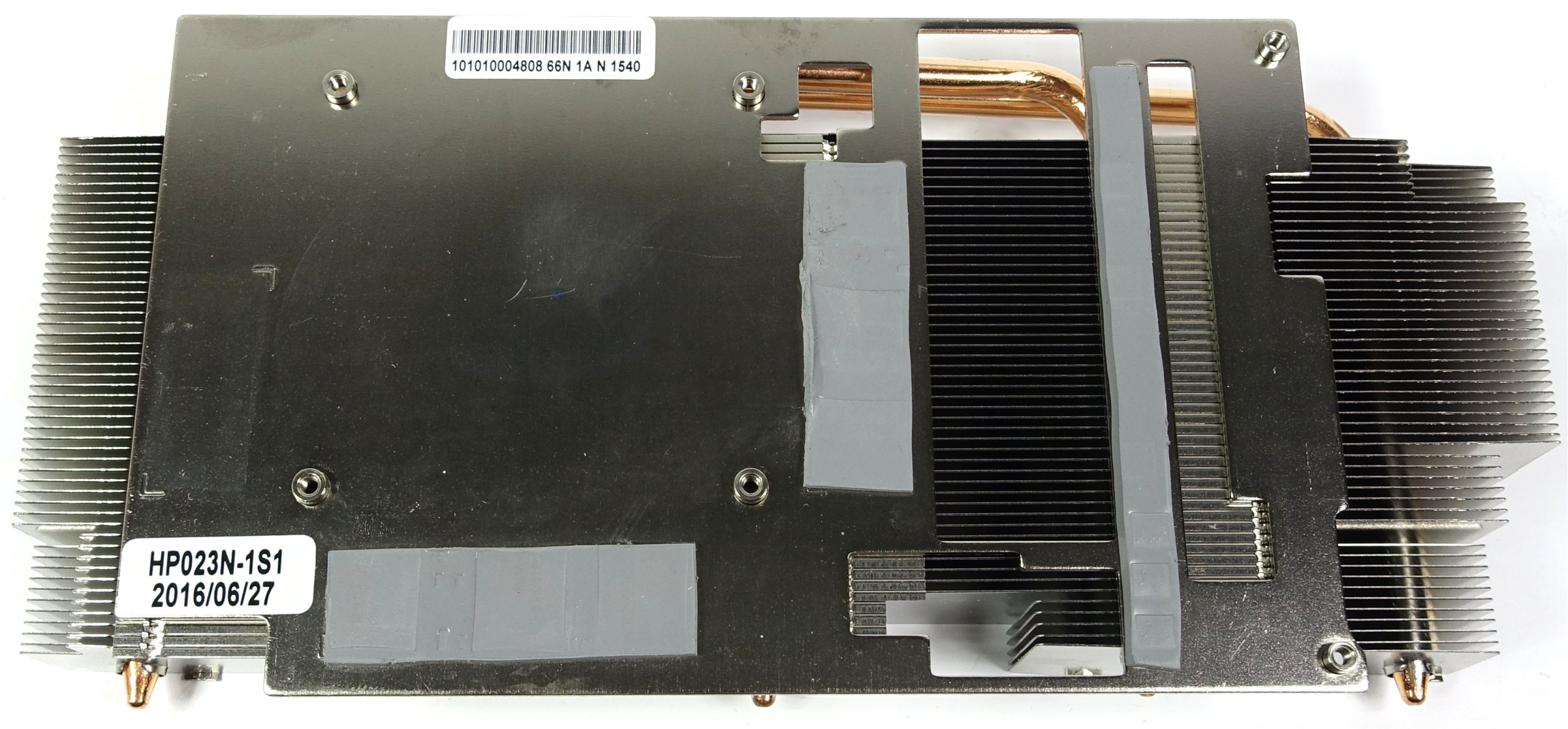 |
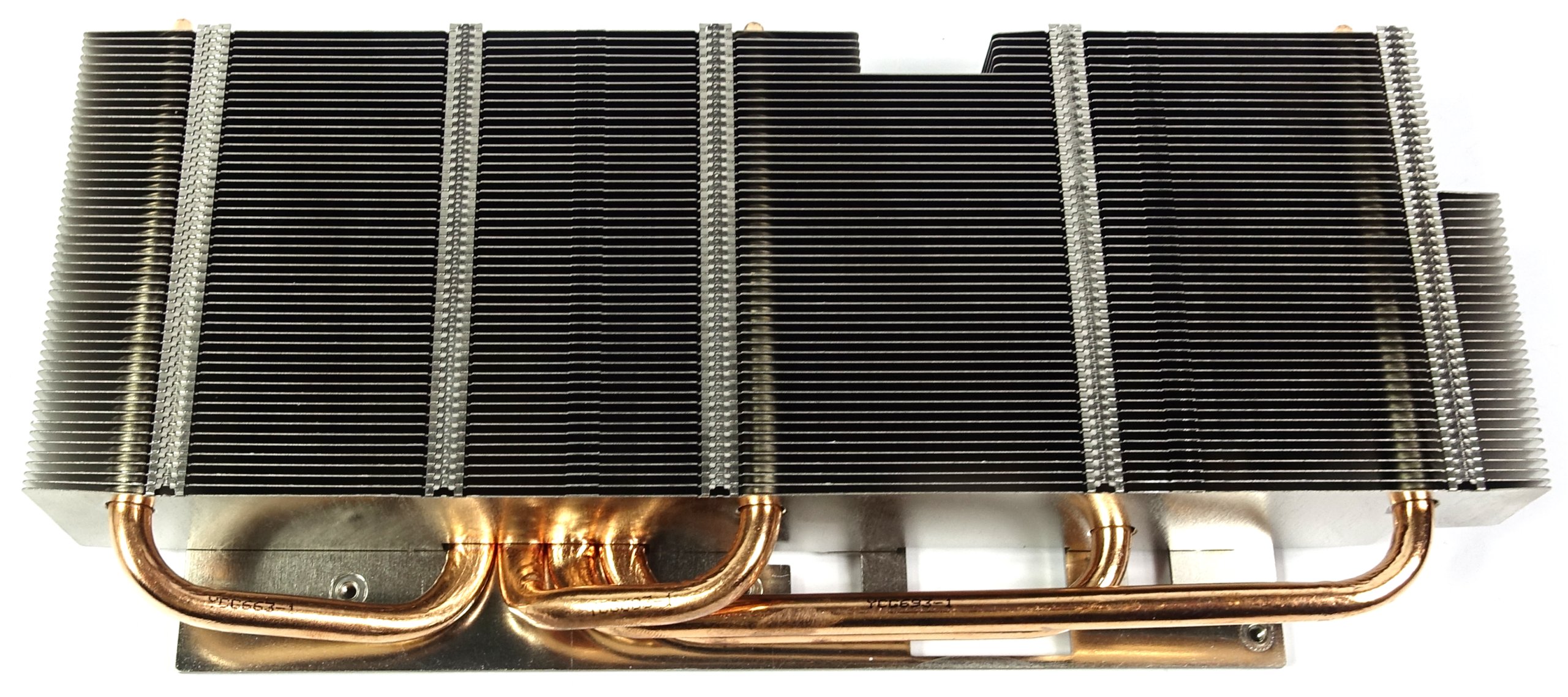 |
The area incorporated into the base plate for the voltage converter MOSFETs can be liked, but the coils have to do without active cooling.
With the 72 to 73°C on the Gaming Loop (closed casing maximum 76°C), the cooler performs its service acceptable, but could perform better if it weren't for the easy installation of the heatpipes. The stress test then reveals a very similar picture. Overall, the measured temperatures are one to two Kelvin higher than those of the sister model, but this may also be because of the slightly higher power consumption and the slightly weaker fans.
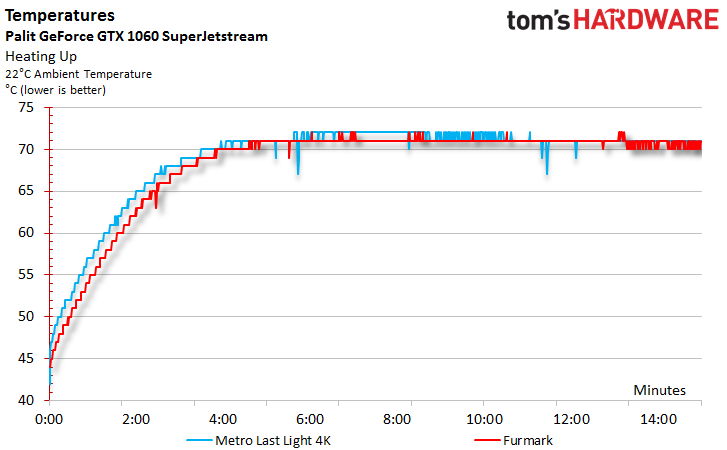
The measurements with the removed backplate also show an acceptable result, whereby the maximum reached at a maximum of 82°C in the case of the voltage converters are so in order. It is interesting that the different fan geometry can obviously cool the board itself better, because the turbulences are slightly larger and more cool air can also reach the outside of the cooler.
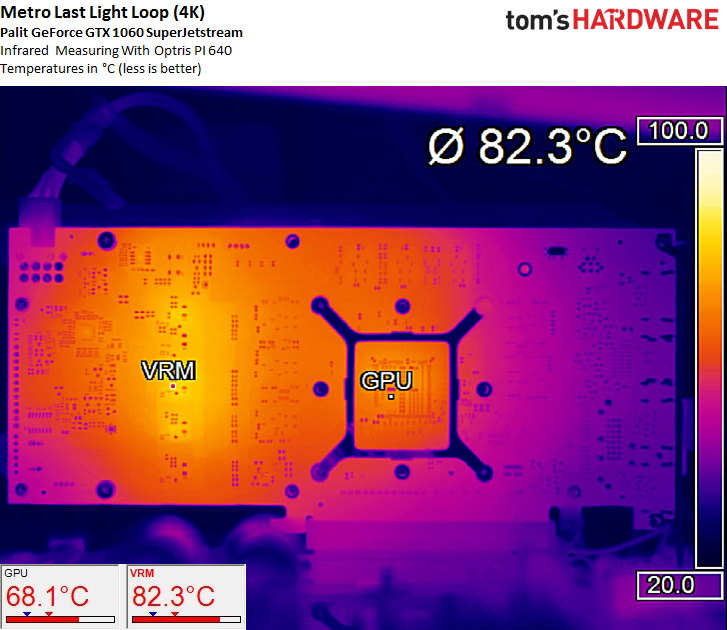
The barely plentiful 87 °C in the stress test follow this realization and are also still in the green area.
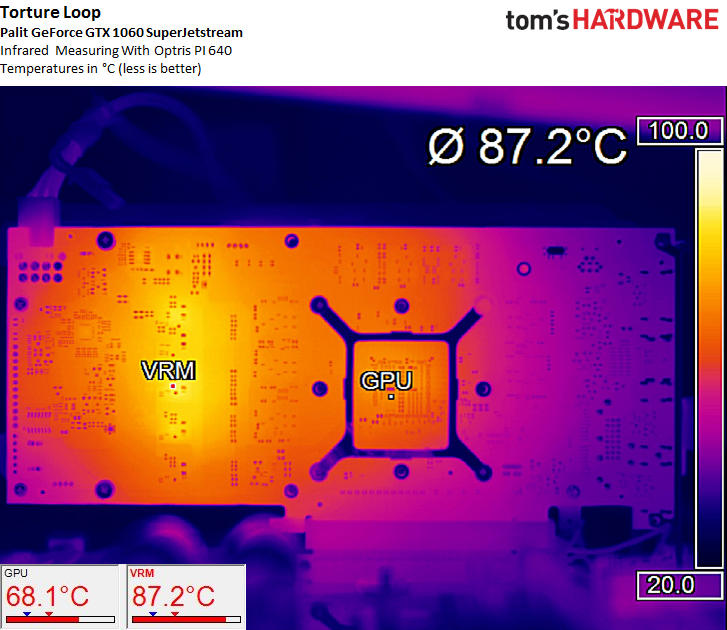
Cooling is therefore acceptable, even if one notes the solution that at least one accountant may have sat next to each engineer.
Noise
Hysteresis is not an issue for many manufacturers. However, Palit also uses a fan curve, the initial value of which is too low after the switch-on pulse during the transition from passive to active mode, since the fans simply stop due to their specifications and then have to be pushed again.
Even the best hysteris is of no use if one overestimates one's own components qualitatively. Here you should have entered as a minimum value at 400 to 450 rpm (approx. 600 rpm as a start-up pulse), which at the end approx. 18 percent as a PWM control signal. However, the knowledge of this circumstance helps to change the curve manually in this way and see: The shop suddenly runs as lubricated even without a hoppler.
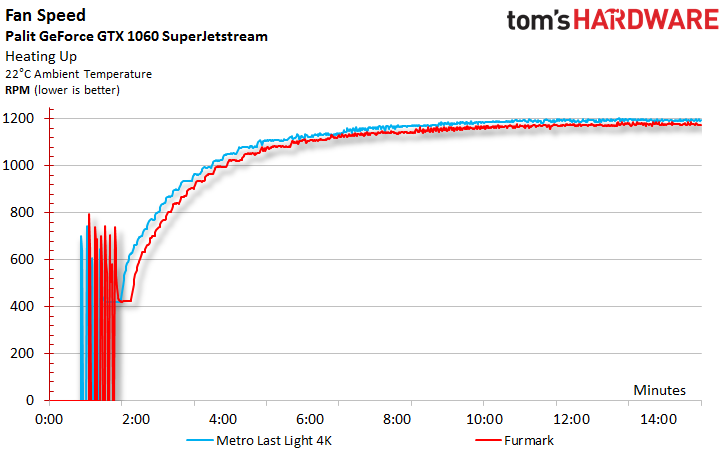
Due to the semi-passive mode, the noise in the idle is not measurable anyway, so we have completely dispensed with this one measurement.
The noise level 35.8 db(A) is acceptable, but also not a peak value. The fact that you have to move so much air is again due to the (inexpensive) cooler (see above), which does not work quite as efficiently as it might possibly be with a few euros more material. The rest is rather inconspicuous – and it is positive to notice that low-frequency storage noises are almost completely missing. So it remains rather a noise, which can be swallowed better by the housing (insulation).
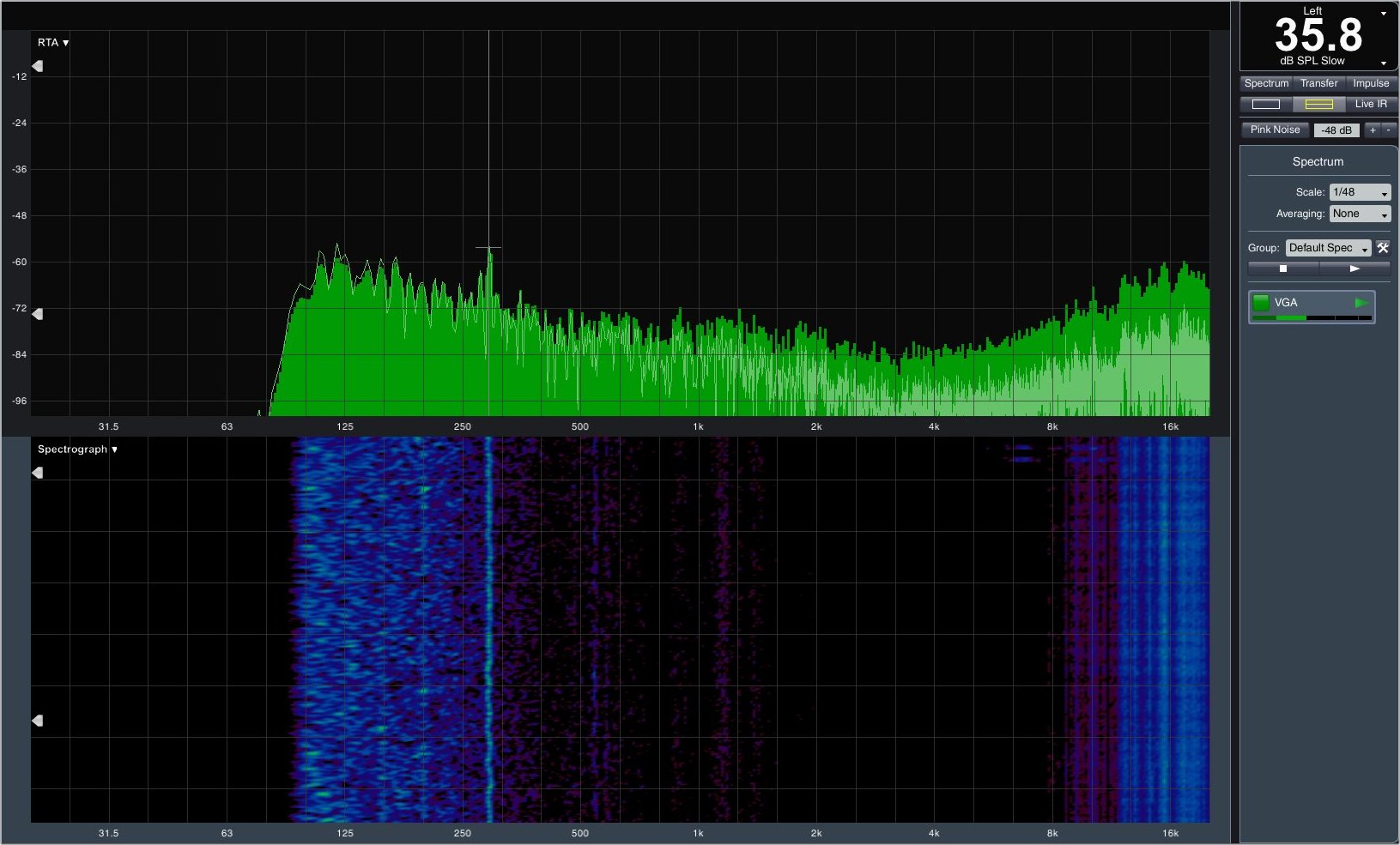
Technical data and interim conclusion
Let's take a look at the technical data and individual details of the graphics card:
- 1 - Einführung und Übersicht
- 2 - EVGA GeForce GTX 1060 Superclocked
- 3 - Gainward GeForce GTX 1060 Phoenix GS
- 4 - Gigabyte GeForce GTX 1060 G1 Gaming
- 5 - inno3D GeForce GTX 1060 Gaming OC
- 6 - MSI GeForce GTX 1060 Gaming X 3G
- 7 - MSI GeForce GTX 1060 Gaming X 6G
- 8 - Nvidia GeForce GTX 1060 Founders Edition
- 9 - Palit GeForce GTX 1060 SuperJetstream
- 10 - [Neu] PNY GeForce GTX 1060 XLR8 OC Gaming
- 11 - Vergleich der Gaming-Performance
- 12 - Vergleich vom Temperatur, Lautstärke und Leistungsaufnahme
- 13 - Vergleichende Zusammenfassung und Fazit
































Kommentieren